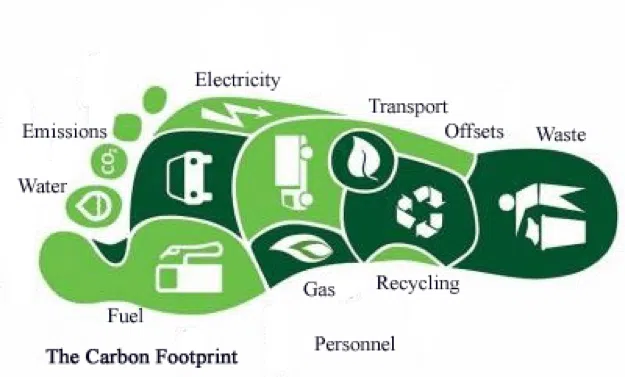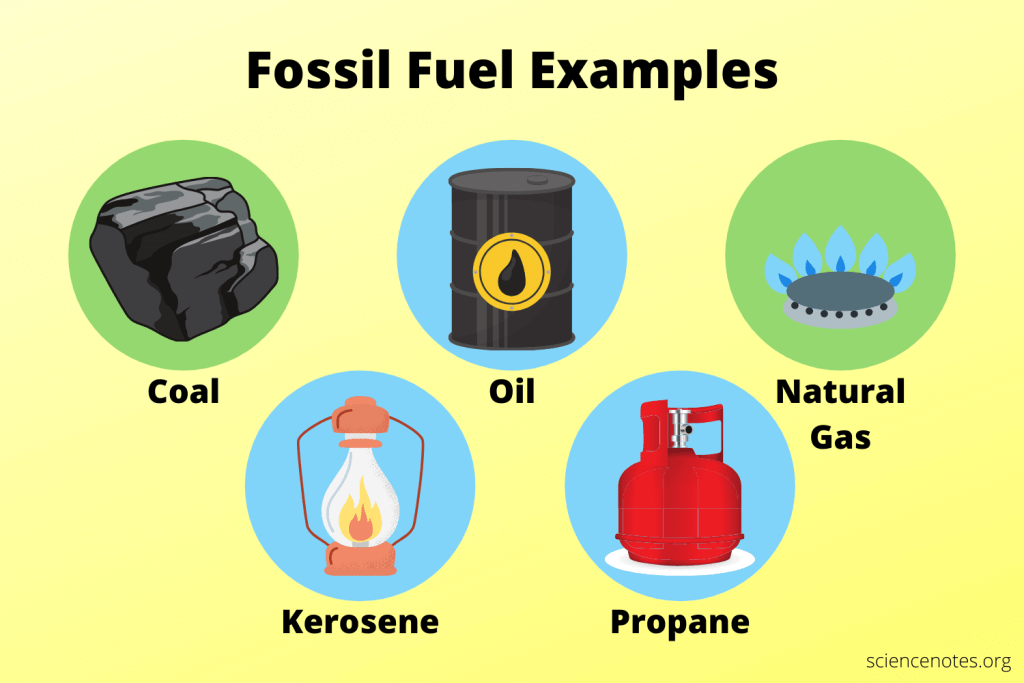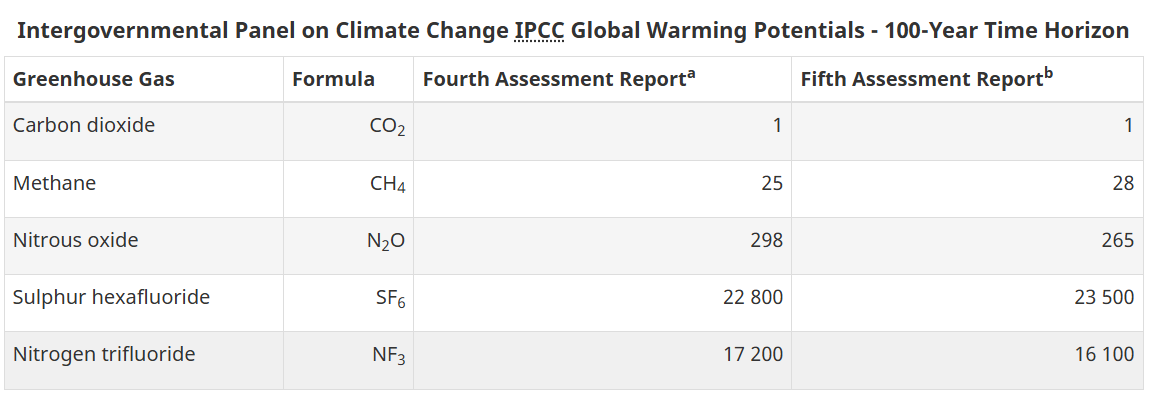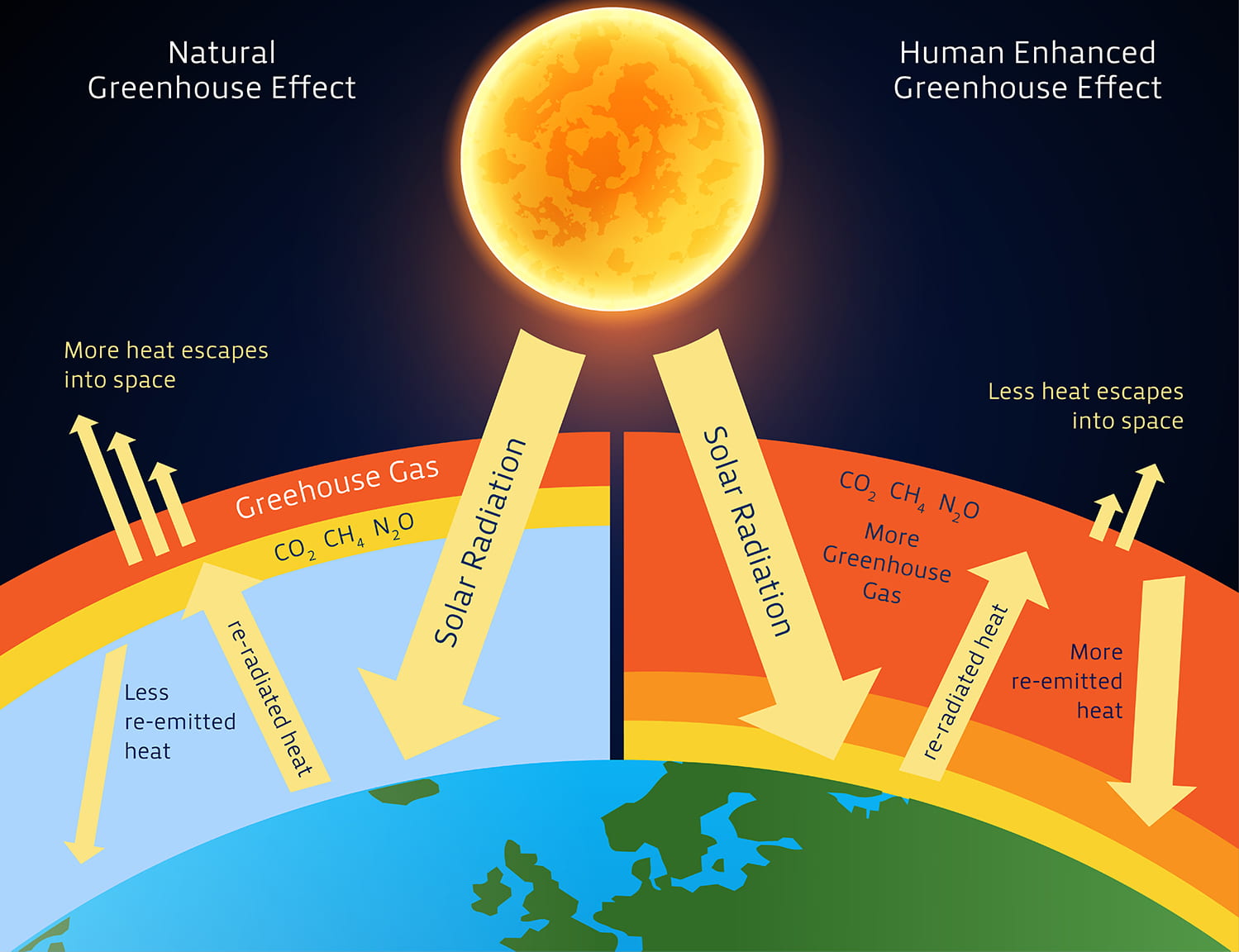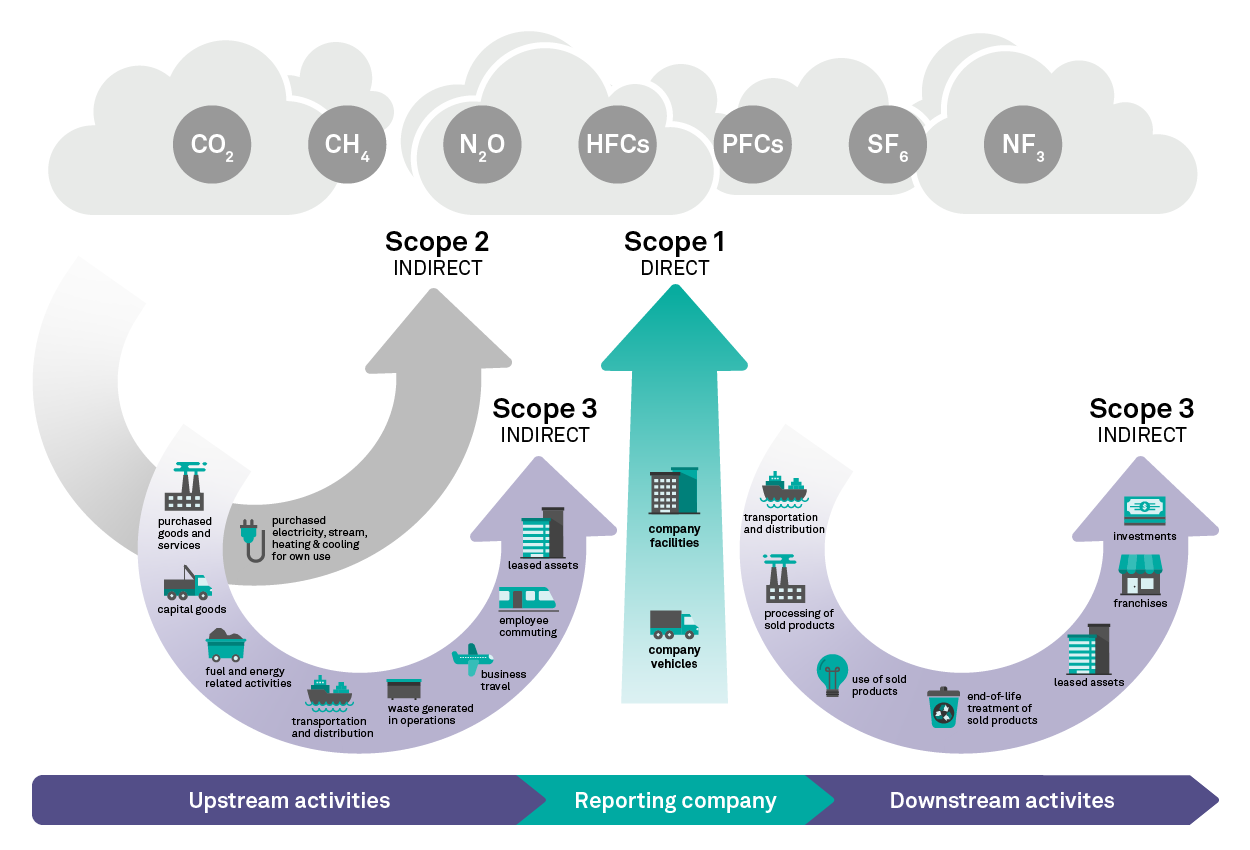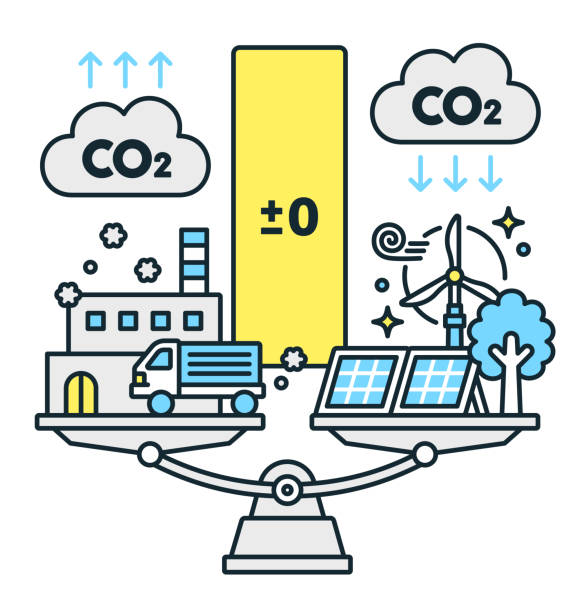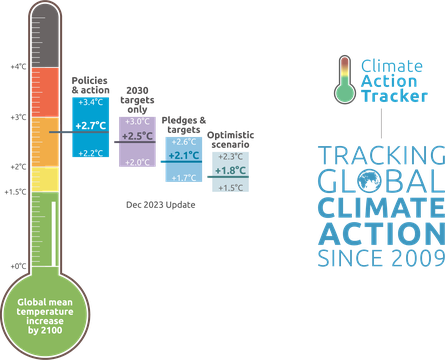Overview
Energy Transition is the process of shifting away from higher carbon intensive sources (ie. fossil-fuel based sources, such as oil) to lower carbon emission sources of energy (eg. low-carbon biodiesel) or renewable sources of energy (eg. solar-powered energy).
It is the process of changing the way energy is produced, delivered, and consumed, to meet changing economic, environmental, and technological goals.
The shifting from one energy system or fuel type to another can include:
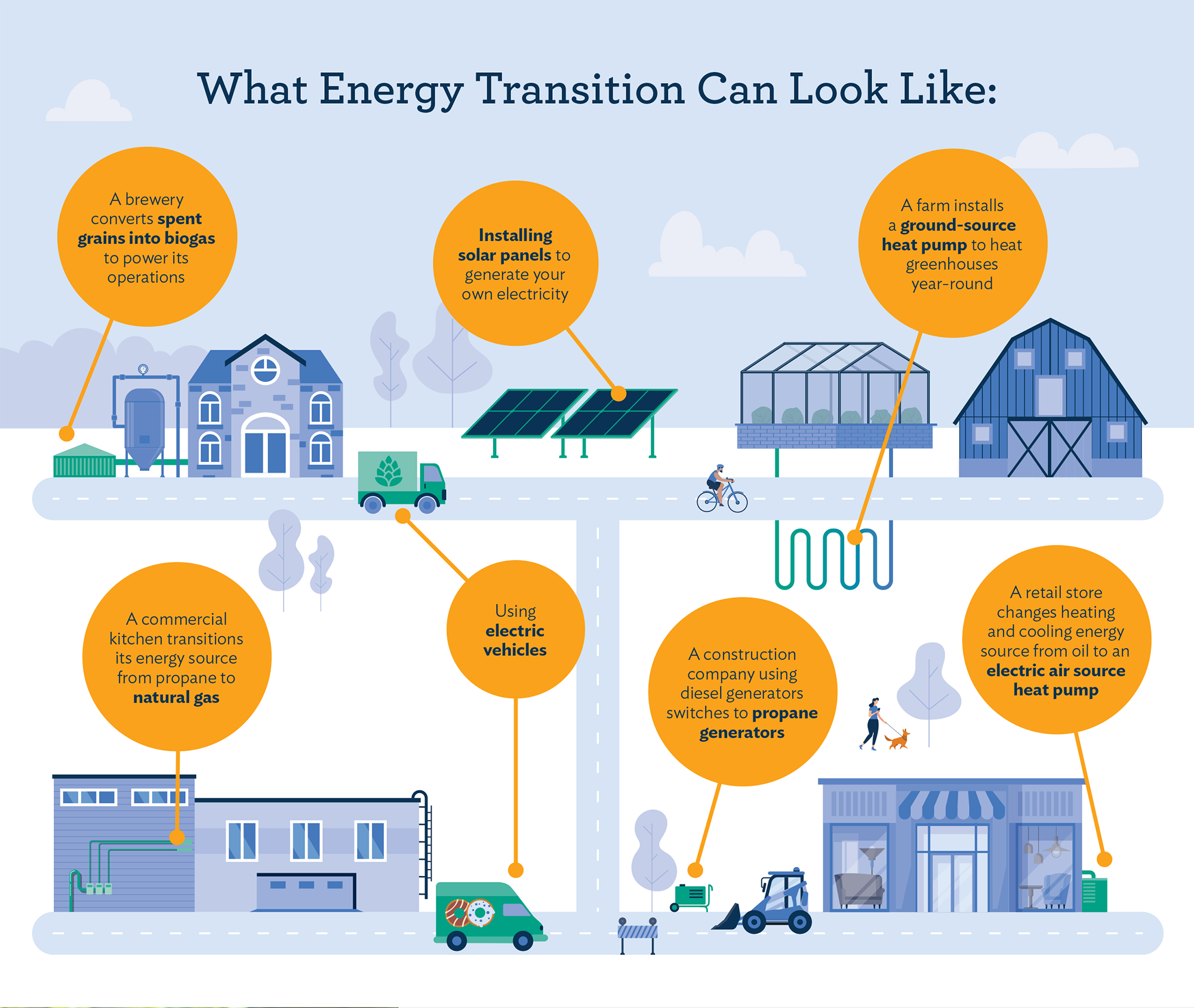
Definitions & Terms
Commonly used definitions and terms when discussing energy transition.
- Carbon Footprint: The total amount of greenhouse gases, such as carbon dioxide, released into the atmosphere by a person, group, product, or activity. It is usually measured in tons of carbon dioxide equivalent (CO₂e).
- Climate Change: A long-term change in temperature and usual weather patterns in a certain area, caused by increased greenhouse gases in the atmosphere.
- Carbon Dioxide Equivalent (CO₂e): A way to compare different greenhouse gases by showing their impact as the amount of carbon dioxide that would cause the same warming effect.
- Example: Methane is 84 times more potent than carbon dioxide over 20 years. If a car emits 1 ton of methane, its effect is like releasing 84 tons of carbon dioxide. So, the car’s emissions would be 84 tons of CO₂ equivalent (CO₂e).
- Decarbonization: The process of lowering carbon dioxide emissions from producing and using energy.
- Electrification: Switching from using fuels like gas or oil to using electricity for things such as heating, vehicles, or machines.
- Fossil Fuels: Energy sources such as coal, oil, and natural gas that come from the remains of ancient plants and animals formed over millions of years and are burned for energy.
- Global Warming Potential (GWP): A way to measure how much heat a greenhouse gas traps in the atmosphere over a certain time compared to carbon dioxide (CO₂), which has a GWP of 1.
- Greenhouse Gases (GHGs): Gases in the air, like carbon dioxide (CO₂), methane (CH₄), and nitrous oxide (N₂O), that trap heat from the sun and warm the Earth like a blanket.
- Greenhouse Gas Emissions: Greenhouse gas emissions are grouped into three scopes. Scope 1 covers direct emissions from things a company controls, like fuel for vehicles or heating. Scope 2 includes indirect emissions from purchased energy, such as electricity. Scope 3 covers all other indirect emissions, like supply chains, travel, and product use.
- Net-Zero: Balancing the amount of greenhouse gases released into the atmosphere with the amount removed so that the total is zero.
- Paris Agreement: Adopted in 2015, this global treaty brings together 196 countries to limit global warming to below 2°C, aiming for 1.5°C, to prevent the worst effects of climate change. Countries set their own emission reduction goals and update them every five years.
- Renewable Energy: Energy made from natural sources that are always being replaced, like sunlight, wind, water, and the Earth’s heat.
- Sustainability: Using resources and living in a way that meets current needs without harming the ability of future generations to meet their own needs.
Energy Efficiency Vs. Energy Transition
Energy Efficiency means using less energy to do the same job, for example, switching LED lights, improving heating and cooling systems, or using smart controls. This saves energy and money but doesn’t change where the energy comes from.
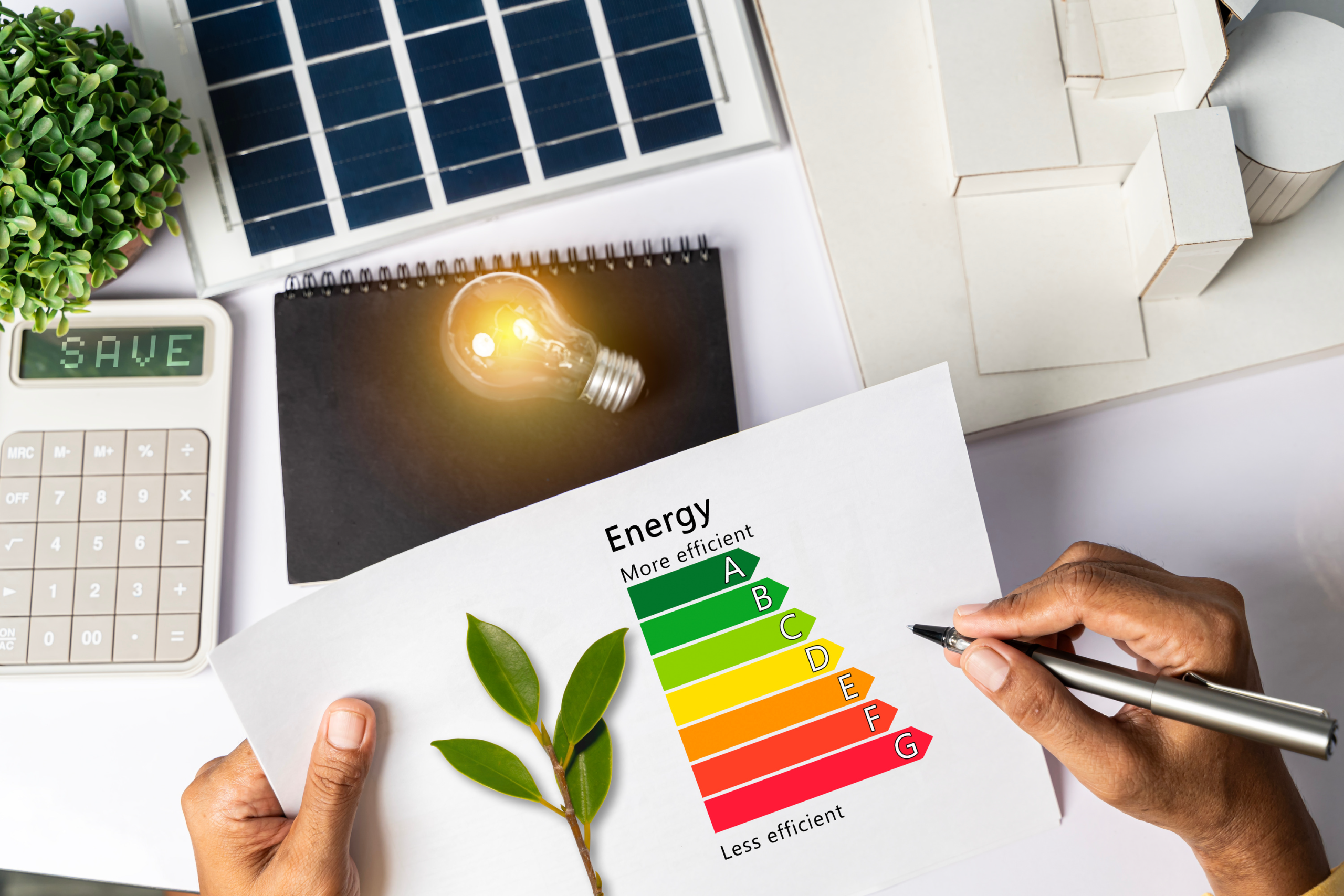
Energy Transition means switching from fossil fuels to cleaner or renewable energy sources such as solar, wind, biofuels, electrification, or hydrogen. This means a business or home gets its energy from cleaner options.
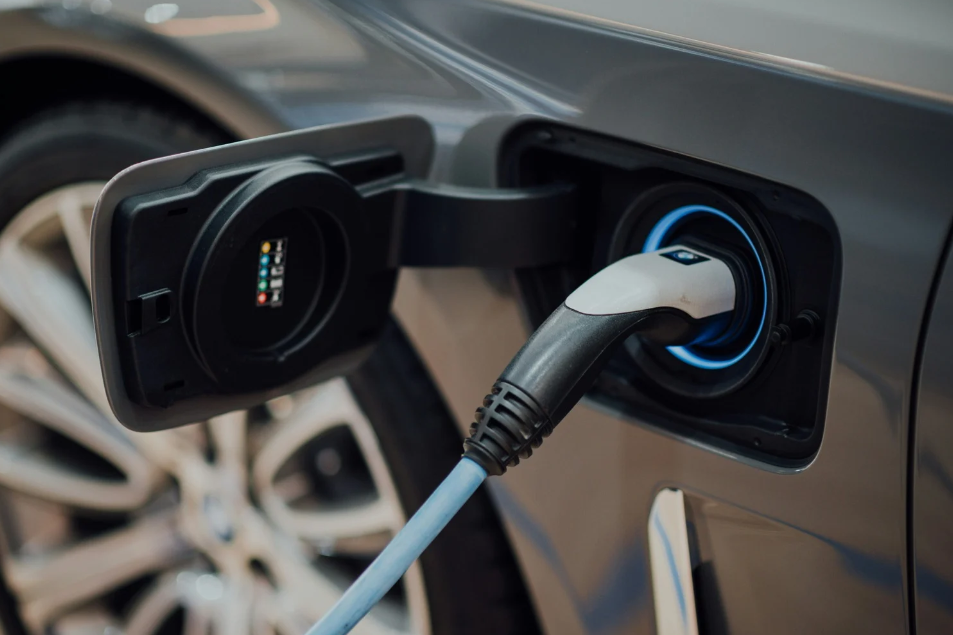
How They Connect: Energy transition means moving to cleaner, lower-carbon energy sources. Managing how much energy is used is important in this process. By using less energy, businesses can lower the cost and size of the change and make it more successful and lasting. While energy efficiency is helpful, switching to cleaner energy sources brings bigger benefits and long-term improvements.
Greenhouse Gas Reduction Targets
Canada Greenhouse Gas Emission Targets:
- 1,2Canada has set ambitious targets to combat climate change and transition to a low-carbon economy. Through the Canadian Net-Zero Emissions Accountability Act it legally binds the federal government to achieve net-zero greenhouse gas emissions by 2050.
- 2030 Target: Reduce greenhouse gas emissions by 40-45% below 2005 levels by 2030.
- 2050 Target: Achieve net-zero emissions by 2050.
- 3Canada has a 100% Zero-Emission Vehicle (ZEV) Sales target by 2035 for all new light-duty vehicles, including interim targets of at least 20% by 2026 and at least 60% by 2030. Which means that every vehicle sold after 2035 will be zero-emissions.
- Types of zero-emission vehicles (ZEVs):
- Battery Electric Vehicles (BEVs): Powered solely by electricity stored in batteries.
- Hydrogen Fuel Cell Vehicles (FCVs): Use hydrogen to generate electricity for propulsion.
- Plug-in Hybrid Electric Vehicles (PHEVs): Can run exclusively on electricity for a specified distance before switching to a hybrid mode using both liquid fuels and electricity
- Types of zero-emission vehicles (ZEVs):
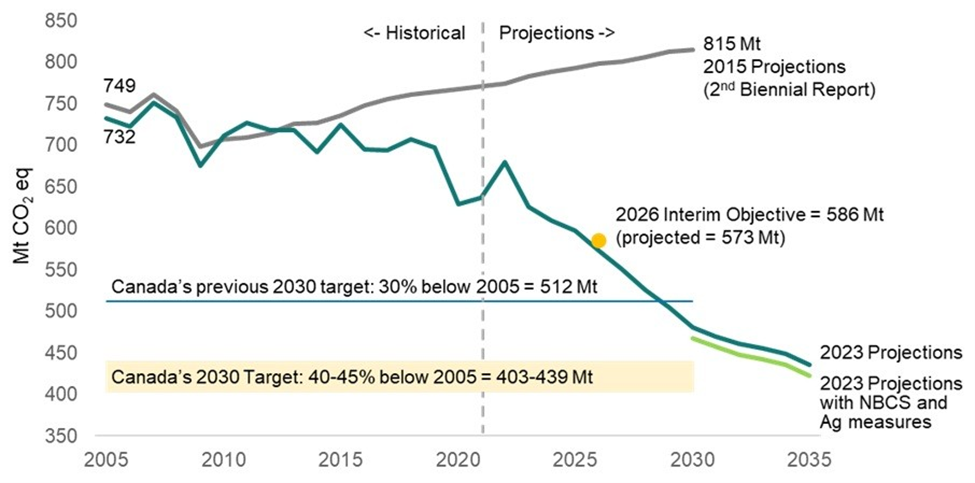
Provincial Greenhouse Gas Targets:
- 42030 Target: Ontario aims to reduce GHG emissions by 30% below 2005 levels by 2030. This goal aligns with Canada’s national targets and represents a significant step towards mitigating climate change.
- 52050 Target: By 2050, Ontario seeks to achieve an 80% reduction below 1990 levels. This long-term target underscores the province’s dedication to deep decarbonization and sustainable development.
- 6Ontario is committed to achieving a net-zero electricity grid by 2050.
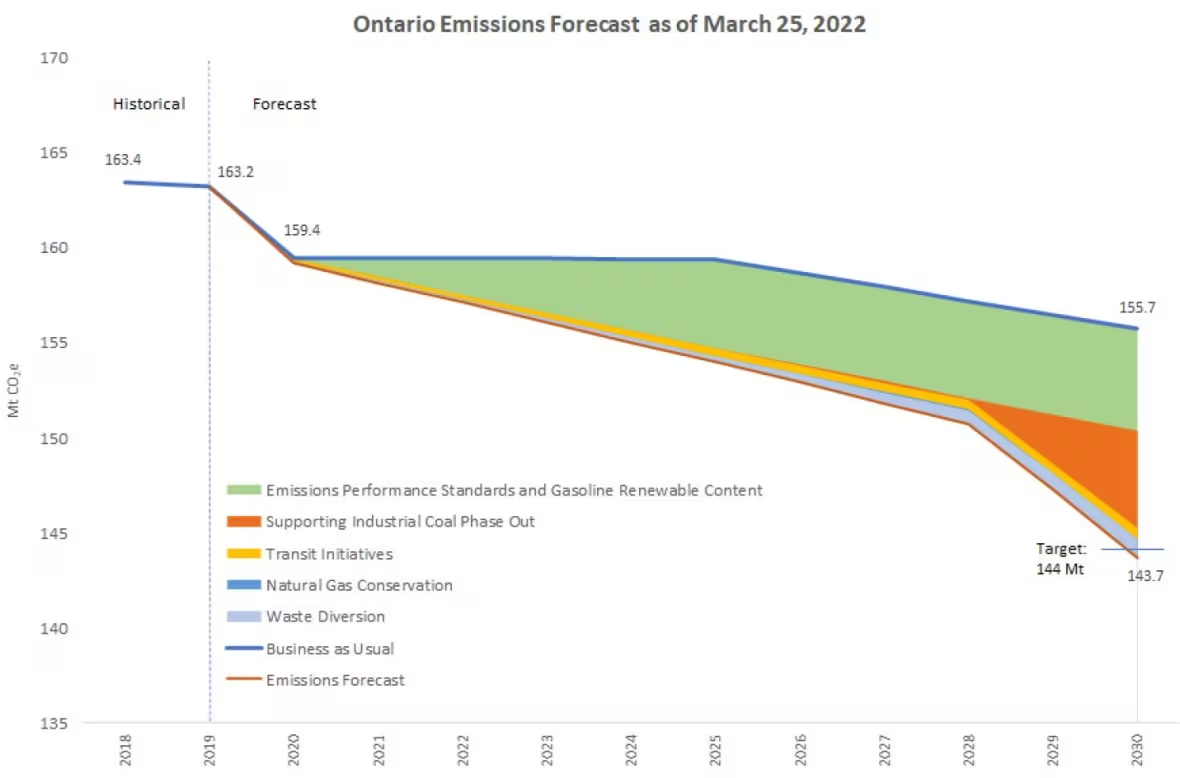
Local Environmental Targets:
7Bruce County is actively developing an Environmental Sustainability Action Plan aimed at building organizational capacity to adapt to and mitigate the impacts of climate change. This plan will help shape a more sustainable future for Bruce County’s operations, services, and communities.
- Waste Management: Improve waste reduction and management practices.
- Climate Resilience and Adaptation: Enhance the ability to respond to climate impacts.
- Energy Conservation: Promote energy efficiency and reduce consumption.
- Forest Conservation: Protect and manage forest resources.
- Sustainable Transportation: Encourage environmentally friendly transportation options.
In Bruce County, different communities may have their own climate goals, rules, or bylaws that could impact your project plans and timelines, checking with them will ensure your energy initiatives remain on track and aligned with your business objectives.
Federal & Provincial Environmental Regulations
The Federal Government and Provincial Government have regulations and laws that may apply to your business and may require you to report your emissions or follow their guidelines.
Canada:
1. The Greenhouse Gas Pollution Pricing Act is Canada’s federal law that sets a national carbon pricing system, applying a fuel charge on fossil fuels and an Output-Based Pricing System (OBPS) for large industrial emitters. It ensures all provinces and territories have a minimum standard for pricing carbon pollution to help reduce greenhouse gas emissions.
- Fuel Charge (Part 1)
- Applies to provinces and territories without their own approved carbon pricing systems (e.g., Ontario, Alberta, Saskatchewan, Manitoba).
- Charges apply to fossil fuels: gasoline, diesel, natural gas, propane, coal, etc.
- Carbon price started at $20/tonne CO₂e in 2019; rising $15 per year, reaching $65 in 2023 and $170 by 2030.
- Certain users (e.g., farmers, greenhouse growers, aviation and marine operators) may qualify for exemptions or rebates.
- Output-Based Pricing System (OBPS) (Part 2)
- Applies to large industrial facilities emitting ≥50,000 tonnes CO₂e/year. Facilities emitting 10,000–50,000 tonnes CO₂e/year in eligible sectors may opt in.
- Facilities receive a Total Annual Emissions Limit (TAEL) based on production and sector-specific benchmarks.
- Emissions below benchmark earn Output-Based Credits (OBCs).
- Emissions above benchmark require compliance through:
- Surrendering OBCs or federal offset credits, or
- Paying a price for each excess tonne.
- OBPS facilities are exempt from the federal fuel charge for fuels used on-site.
- Facilities must report Scope 1 direct emissions of the following 7 greenhouse gases (above ≤0.5% total GHG emissions):
- Carbon dioxide (CO₂), Methane (CH₄), Nitrous oxide (N₂O), Sulphur hexafluoride (SF₆), Nitrogen trifluoride (NF₃), Hydrofluorocarbons (HFCs), Perfluorocarbons (PFCs).
2. The Greenhouse Gas Reporting Program (GHGRP) requires reporting from facilities that emit ≥ 10,000 tonnes CO₂‑equivalent per year of greenhouse gases (Scope 1).
- Facilities involved in carbon capture, transport, utilization, or storage (CCTUS) must also report, regardless of emissions.
- Additionally, facilities engaged in the following activities are required to provide additional data:
– aluminum production, ammonia production, base metal production, cement production, electricity or heat-steam generation, ethanol production, hydrogen production (refineries or stand-alone), iron and steel production, lime production, mining, nitric acid production, petroleum refining, pulp and paper production, CO2 capture, transport, injection and/or geological storage
3. The Clean Fuel Regulations (CFR) require producers and importers of gasoline and diesel in Canada to reduce the carbon intensity of their transportation fuels annually from 2023 to 2030.
- Suppliers of renewable fuels such as ethanol, biodiesel, renewable diesel, sustainable aviation fuel, hydrogen, and renewable natural gas are also regulated.
- Compliance can be met by blending low-carbon fuels, adopting cleaner production technologies, or purchasing credits through a trading system.
- Feedstock suppliers must provide traceability and comply with land-use and sustainability criteria.
- Operators of electric vehicle charging stations and alternative fuel infrastructure can generate credits by supporting fuel switching.
- Regulated parties must report fuel volumes, carbon intensity data, and credit transactions annually to demonstrate compliance.
- Reduction targets increase progressively each year until 2030.
Ontario:
1. Ontario Regulation 506/18: Reporting of Energy Consumption and Water Use, requires owners of large buildings (50,000 square feet or more) or multi-unit residential buildings with 10 or more units, to report their energy and water use annually to the Ministry of Energy.
- The annual reporting deadline is July 1st each year, with the data covering the previous calendar year (January 1 to December 31).
- Reports must be submitted through the Energy Star Portfolio Manager tool, a free online platform developed by the U.S. Environmental Protection Agency and adapted for use in Canada. Building owners need to create an account, enter their building’s information, and upload monthly energy and water usage data. This includes electricity, natural gas, and water consumption.
- For buildings with a gross floor area of 100,000 square feet or more, the reported data must be verified by a certified professional, such as a professional engineer or a certified energy manager, at least once every five years.
2. Ontario Regulation 390/18: Greenhouse Gas Emissions: Quantification, Reporting and Verification, requires large industrial facilities (that emit more than 10,000 tonnes or more of CO₂ equivalent (CO₂e) per year) and electricity importers (into Ontario) to report their annual greenhouse gas emissions to the Ministry of the Environment, Conservation and Parks. Any facility that is registered, or required to register, under Ontario’s Emissions Performance Standards (EPS) must also submit a report and have their report verified.
- Report Scope 1 (direct emissions) of 7 main GHGs: CO₂, CH₄, N₂O, SF₆, NF₃, HFCs, and PFCs.
- Not required to report GHG emissions of fuels that do not exceed 0.5 percent of the total facility GHG emissions from all fuels combusted.
3. Ontario Regulation 241/19: Greenhouse Gas Emissions Performance Standards, began in 2022, requires large industrial facilities (that emit more than 50,000 tonnes of CO₂e or more per year, and other facilities whose primary activities are listed in Schedule 2 of the regulation (e.g. smelting, petroleum refining, natural gas processing, producing grain ethanol).
- Facilities emitting 10,000–50,000 t CO₂e per year in eligible industrial sectors (Schedule 2) can choose to join, often to gain exemptions from federal fuel charges.
- Calculate Emissions using the same approved methods from O. Reg. 390/18 (Scope 1, seven GHGs).
- Determine Emissions Limit (Total Annual Emissions Limit (TAEL) based on benchmarks—either sector-average or facility-specific. TAEL is based on production output and emissions intensity benchmarks.
- If emissions are higher, the facility must surrender compliance units:
- Excess Emission Units (EEUs) from the government at a fixed price.
- Emission Performance Units (EPUs) from under-emitters, which are tradable.
- If emissions are lower, the facility earns EPUs to bank or sell.
4. Ontario Regulation 77/19: Greenhouse Gas Emissions: Quantification, Reporting and Verification, filed in 2019, refines the methods and definitions used for calculating and reporting greenhouse gas (GHG) emissions under O. Reg. 390/18. It standardizes scientific terms and calculation formats to ensure more accurate and uniform reporting.
- Applies to the same facilities and electricity importers covered by O. Reg. 390/18 (e.g., operations emitting ≥ 10,000 t CO₂e/year or importing power). It does not create a new threshold, just improves reporting rules.
- Updated formulas: Emissions must be calculated using a set equation where GWP (Global Warming Potential) values switch to the most recent tables depending on the year.
- O. Reg. 77/19 doesn’t add new obligations, but makes sure everyone calculates and defines emissions the same way, using up-to-date methods and clear language.
5. Ontario Regulation 25/23: Broader Public Sector: Energy Reporting and Conservation and Demand Management Plans, under the Electricity Act, applies to Ontario’s broader public sector—like municipalities, schools, universities, colleges, hospitals, long-term care facilities, and similar agencies.
- Annual reporting of energy use and greenhouse gas emissions to the Ministry of Energy.
- A five‑year Energy Conservation and Demand Management (ECDM) plan outlining past performance and future goals.
- Includes electricity, natural gas, water usage, and GHG emissions.
6. Emissions Performance Standards Program applies to industrial facilities emitting ≥10,000 tonnes CO₂e/year and electricity importers into Ontario.
- Facilities registered or required to register under the Emissions Performance Standards (EPS) must also report.
- Annual reports must include Scope 1 direct emissions of CO₂, CH₄, N₂O, SF₆, NF₃, HFCs, and PFCs.
- Verification is required for EPS-registered facilities.
- Emissions from fuels contributing ≤0.5% of total fuel emissions do not need to be reported.
Carbon Emissions Calculators
There are many free tools available to help you estimate your business’s carbon footprint. Get in touch with us to learn how to get started and explore the energy transition opportunities that may be right for you.
Funding Resources
Funding resources and different technology opportunities have been identified through the Energy Transition Initiative. Below is a list of major public sources of funding and case studies highlighting the benefits of the programs. We are constantly updating our list and will provide a list of tailored funding opportunities unique to your business and needs.
We’re happy to support your application by reviewing it and helping ensure your project details are well represented.
Case Studies:
- BC dairy farm making the most of milk’s energy through geothermal heat exchange
- ‘A differentiator in the market’: Canada’s first solar-powered brewpub
- Arbru triples solar capacity, bets on off-grid brewing as sustainable edge in craft beer industry
- Solar Project – AET98
Federal/Provincial:
- Canada.ca – Business Benefits Finder
- What is the CT ITC – Clean Technology (CT) Investment Tax Credit (ITC) – Canada.ca
- Grants, subsidies and contributions – Agriculture
- Available funding opportunities from the Ontario Government | ontario.ca
- Energy programs and incentives for Business & Industry | Save on Energy
Local County and Municipalities:
- Spruce the Bruce Community Development Program | Bruce County
- Environmental Stewardship Program Application Form – Municipality of Brockton
- Business Grants and Funding Opportunities | Township of Huron-Kinloss
- Planning & Development: Reports and Studies – Saugeen Shores
- Business Resources – Municipality of Arran-Elderslie
- Grants and Resources | Municipality of South Bruce
- Community Improvement Plan | Municipality of Kincardine
- Grants and Incentives – South Bruce Peninsula
- Community Grants Program | Municipality of Northern Bruce Peninsula
Cleaner Energy Solutions
Carbon Footprint of Energy Sources (Life-Cycle g CO₂e/kWh)8
| Energy Source | Life-Cycle Emissions (g CO₂e/kWh) |
|---|---|
| Hydropower | ~4 |
| Wind | ~11 |
| Nuclear | ~12 |
| Geothermal | ~38–48 |
| Solar PV | ~41 |
| Biogas (upgraded/RNG) | ~20–50 |
| Anaerobic digestion (manure/food waste) | ~30-70 |
| Air Source Heat Pumps (Ontario Grid) | ~77 |
| Biomass | ~100–200 |
| Natural Gas | ~180–220 |
| Propane (LPG) | ~230 |
| Oil (Diesel, Gasoline) | ~700–900 |
| Coal | ~820–1050+ |
Wind Turbines: Wind energy is generated by converting the kinetic energy of wind into electricity using wind turbines. These turbines typically have large blades mounted on a tall tower; when wind moves the blades, it spins a rotor connected to a generator that produces electricity. The electricity produced is usually fed into the grid. Wind energy is a renewable resource, meaning it is naturally replenished and does not run out on a human timescale. Wind farms, which are groups of turbines, can be located on land (onshore) or at sea (offshore)9.
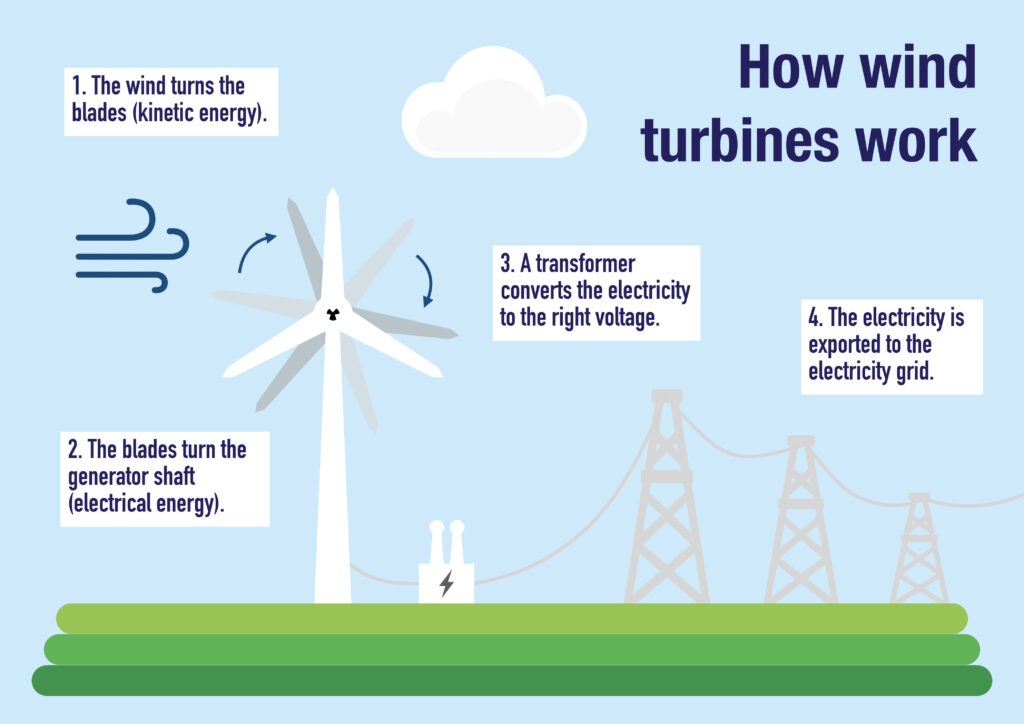
Geothermal Energy: Geothermal energy is heat energy from the earth—geo (earth) + thermal (heat)10. Geothermal, or earth‑energy systems (often GeoExchange), offer a clean and efficient way to heat and cool Canadian buildings by tapping into the stable underground temperature. According to Natural Resources Canada, more than half of the energy used in commercial and institutional buildings is for space heating—accounting for roughly 53% of their total energy use11. By replacing carbon-intensive fuel systems with geothermal systems, these buildings stand to significantly cut both their energy consumption and greenhouse gas emissions.
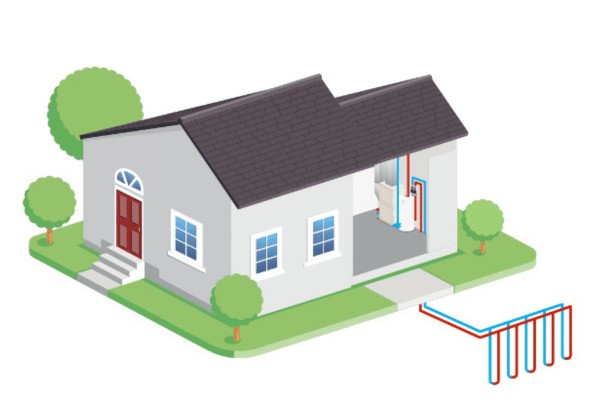
Solar Panels: Solar energy is the power derived from the Sun’s radiation, used to generate electricity and heat through technologies like photovoltaic (PV) systems and solar thermal collectors. It is a renewable resource, meaning it is naturally replenished and does not run out on a human timescale. The Sun produces energy through nuclear fusion, releasing photons that travel to Earth and can be captured by solar panels to generate electricity. Solar energy is harnessed primarily through two methods: PV systems, which convert sunlight directly into electricity, and solar thermal systems, which use sunlight to produce heat. PV panels typically convert 15–22% of sunlight into electricity, while solar thermal systems can reach up to 80% efficiency in sunny regions. Solar energy is used in residential, commercial, and large-scale applications12,13.
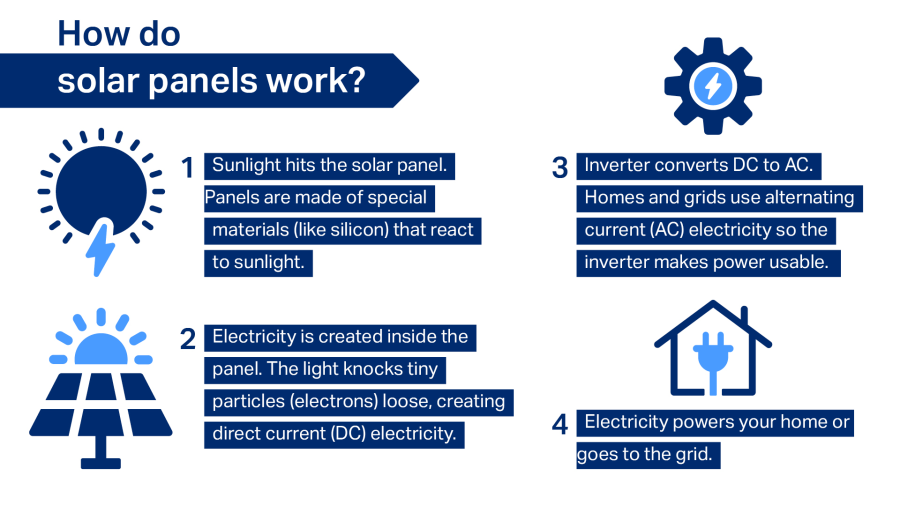
Anaerobic Digestor: Anaerobic digestion is a process where bacteria break down organic materials—like manure, food waste, and wastewater—without oxygen, inside sealed tanks called reactors. This process produces two main outputs: biogas, which contains methane and can be used for heating, electricity, or fuel; and digestate, a leftover material that can be used as fertilizer, animal bedding, compost, or soil amendment. Multiple types of organic waste can be combined in one system, a method called co-digestion, which helps increase biogas production. Biogas can also be purified into renewable natural gas (RNG) for use in pipelines or vehicles. Digestate is separated into solid and liquid parts, each with valuable uses and potential for cost savings or revenue14.
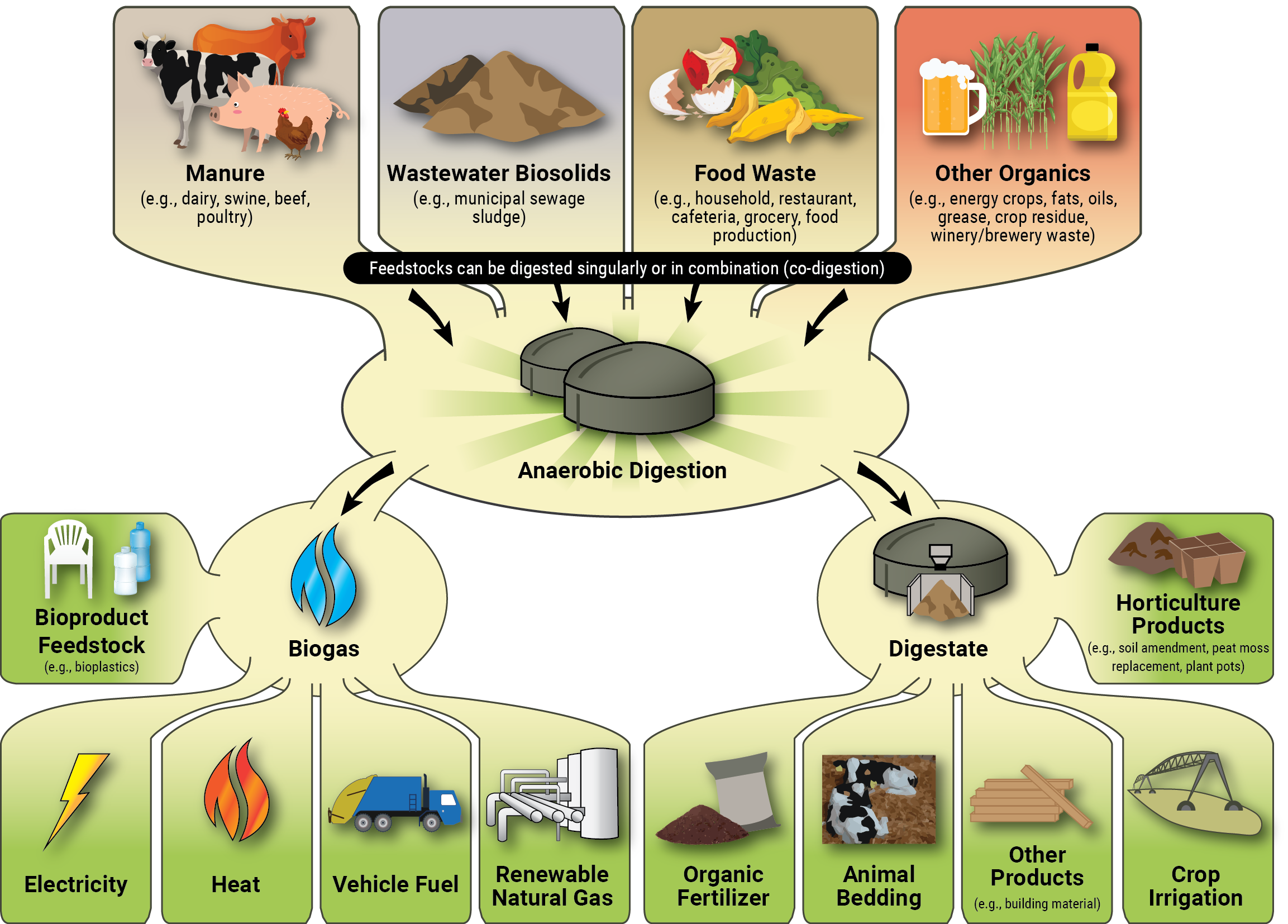
Air Source Heat Pumps: Air source heat pumps (ASHPs) are systems that provide heating and cooling by transferring heat between indoor air and the outside environment. In heating mode, they extract heat from the outdoor air—even in cold weather—and move it indoors. In cooling mode, they reverse the process to expel indoor heat. ASHPs typically have Coefficients of Performance (CoP) ranging from 2 to 4, meaning they deliver two to four times more heat than the electrical energy they consume. The CoP represents the ratio of heat output to electricity input, and cold-climate models can maintain a CoP above 2 even in sub-zero temperatures15.
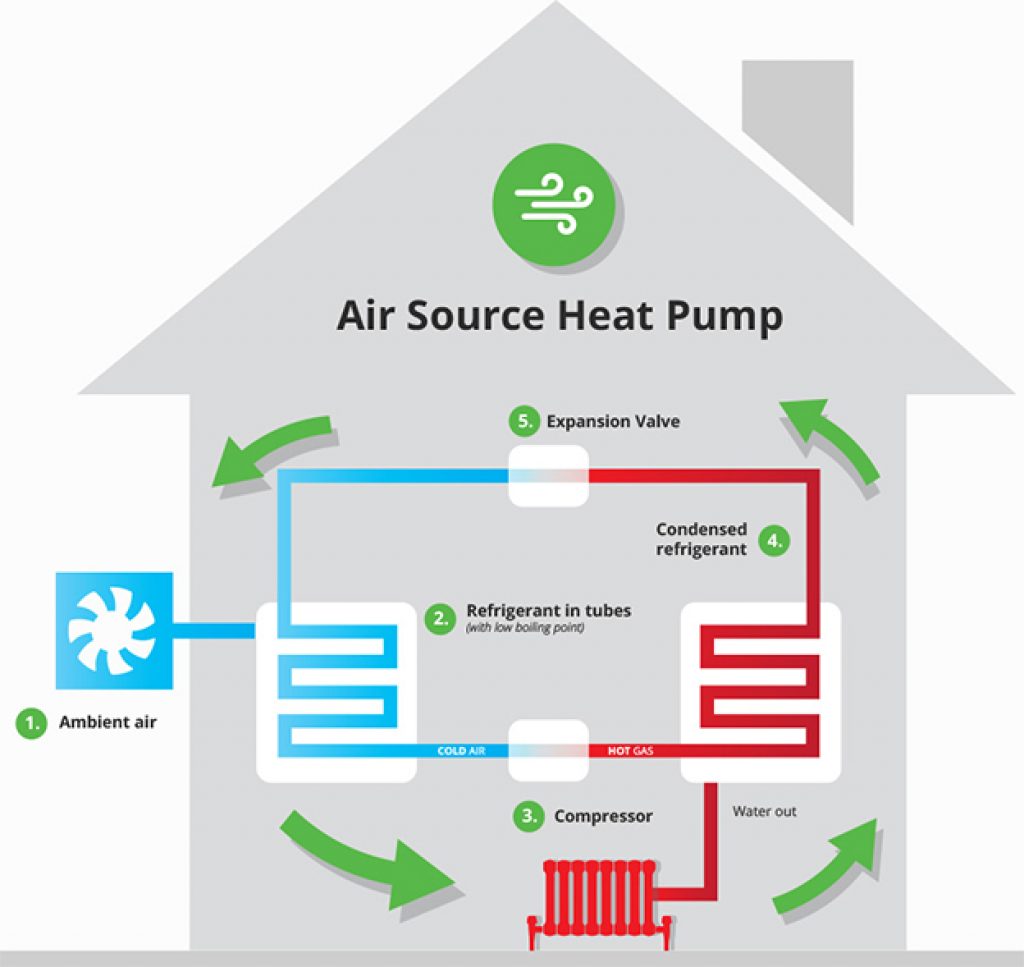
Natural Gas/Renewable Natural Gas Energy: Natural gas is a naturally occurring fuel found deep underground in rock formations. It’s mostly made of methane, along with smaller amounts of other gases like ethane and propane. To use it, companies drill wells to bring the gas to the surface, then clean and process it before sending it through pipelines or other transport systems. Renewable natural gas (RNG) is different—it’s made from organic waste like food scraps, farm waste, and landfill gases. This waste breaks down and releases methane, which is captured, cleaned, and used just like regular natural gas16.
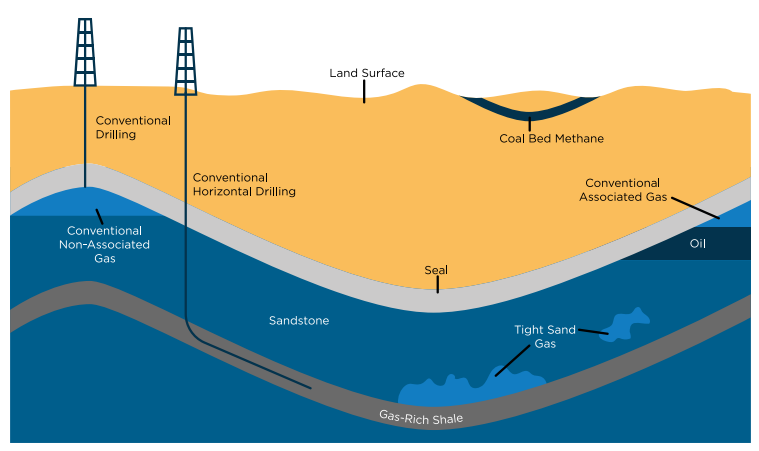
Propane/Renewable Propane Energy: Propane is a clean, efficient, and versatile energy source widely used across Canada, sometimes known as Liquefied Petroleum Gas (LPG). It’s primarily produced during natural gas processing and is stored as a liquid when compressed, making it easy to transport and use, and when released it vaporizes back into gas form. Propane powers a range of applications, including home heating, cooking, and backup generators, as well as vehicles like school buses and taxis. In agriculture, it’s used for drying grain, heating barns, and running irrigation systems, while industries rely on it for construction heating and metal processing. Renewable propane, made from organic materials, offers similar benefits but is still limited in availability within Canada17.

Oil (Heating/Fuel Oil), or petroleum, is an energy source used in many parts of modern life. About half of all oil produced goes into transportation fuels, including gasoline for cars, diesel for trucks, jet fuel for airplanes, and marine fuels for ships. The rest is used for heating, electricity generation, and making products such as plastics, chemicals, lubricants, and asphalt. Oil is valuable because it has a high energy density, meaning a small amount contains a lot of energy, and it can be easily transported and stored. However, burning oil products releases carbon dioxide and other pollutants18.
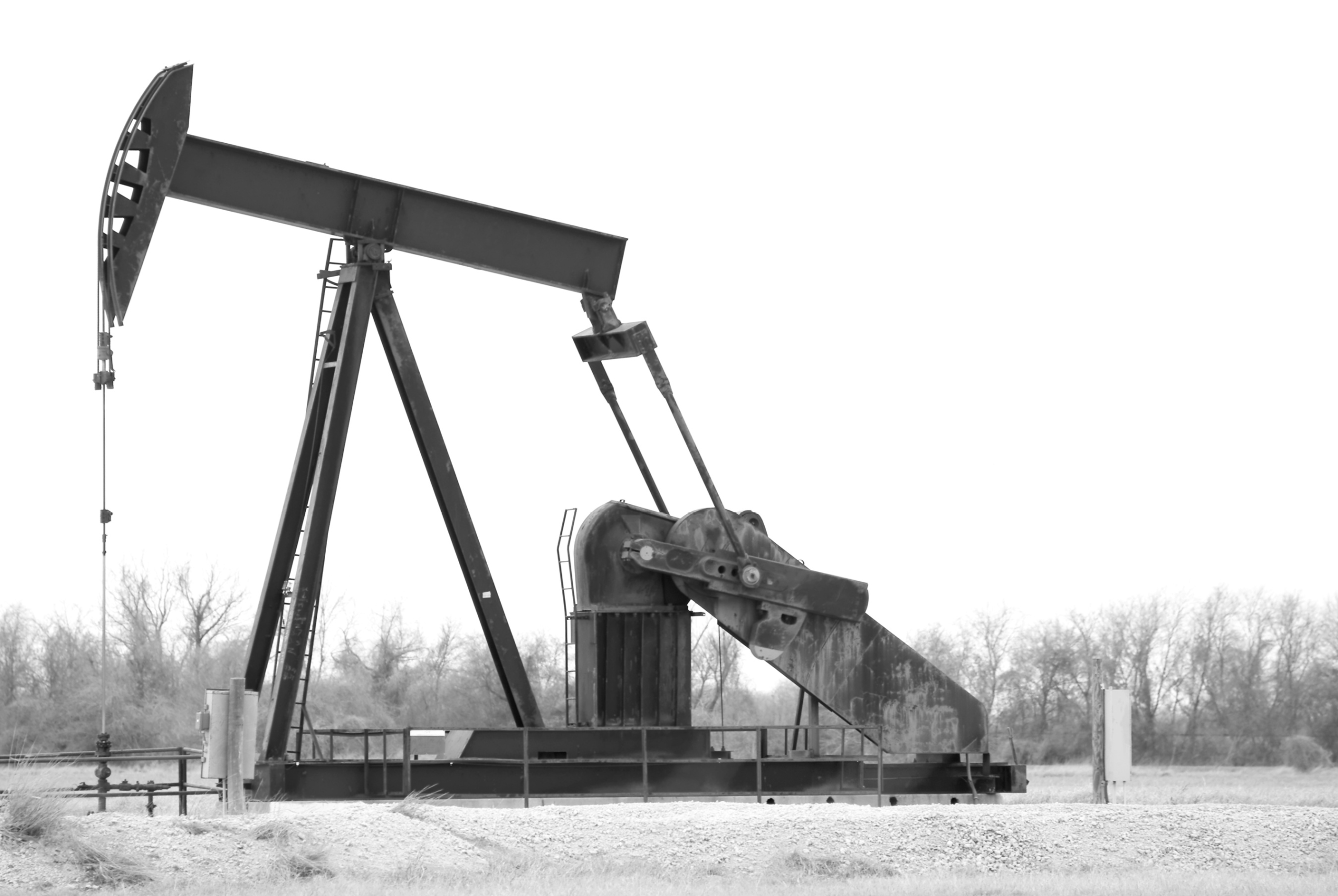
Diesel/Bio-Diesel Energy: Diesel is a powerful fuel used in vehicles, generators, and other engines. It can be made from petroleum (called petrodiesel) or from natural sources like algae (called biodiesel). Diesel engines are more efficient than gasoline engines because diesel has more energy per volume and allows for higher compression. Unlike gasoline engines, diesel engines don’t use spark plugs—they ignite fuel by compressing air until it’s hot enough. Petrodiesel is made by refining crude oil, while biodiesel is cleaner and made from renewable materials. Biodiesel is often blended with petrodiesel, with B20 (20% biodiesel) being a common mix that works well in cold weather and produces fewer emissions19.
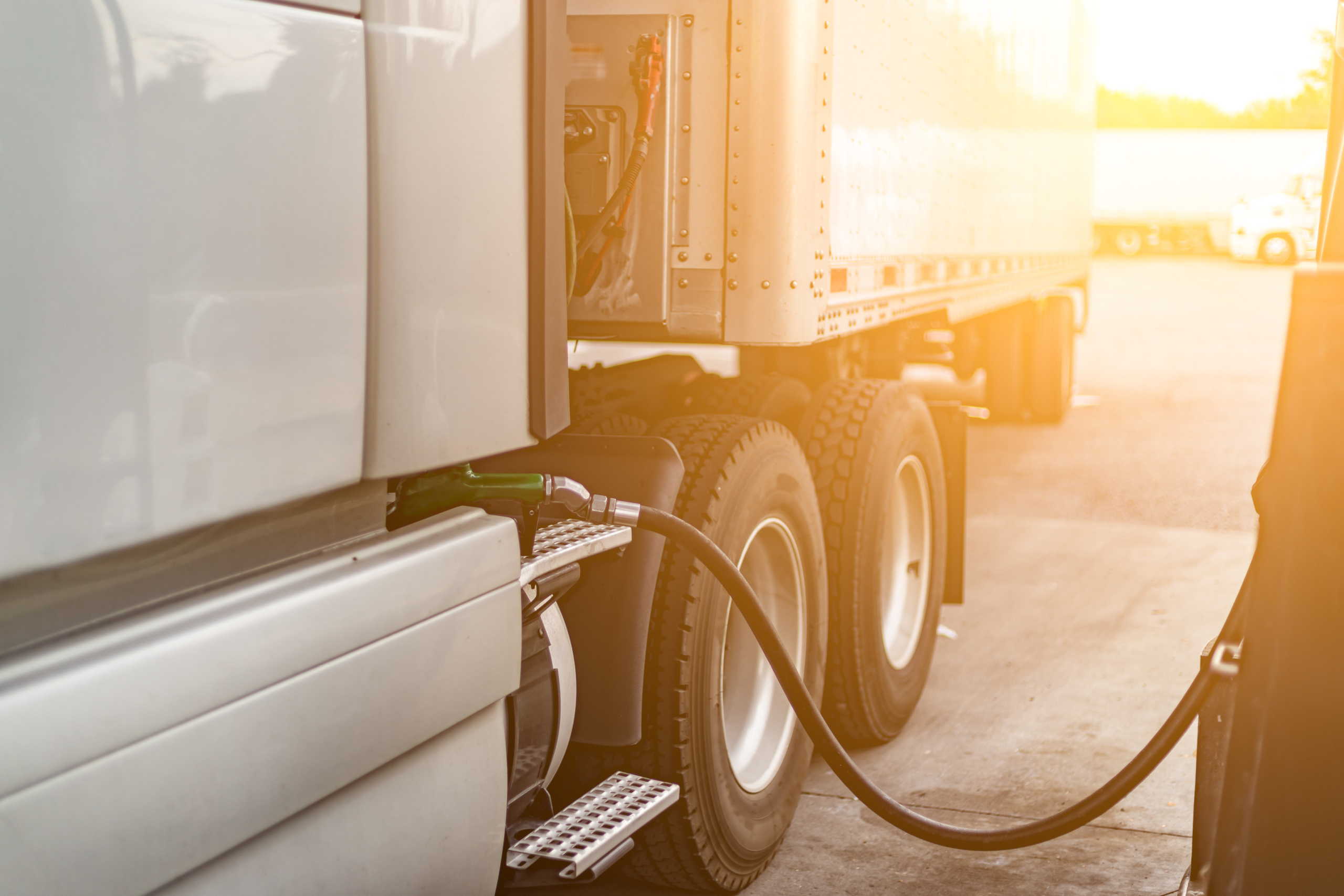
Gasoline: Gasoline is a fuel made from crude oil that is mainly used to power cars and small trucks. At oil refineries, crude oil is processed and separated into different products, with gasoline being one of the most common. To improve performance and reduce pollution, additives like ethanol (a type of alcohol made from plants such as corn or sugarcane) are often blended into gasoline before it reaches gas stations. Gasoline is sold in different grades—regular, midgrade, and premium—which are based on octane levels that measure how well the fuel resists knocking in an engine. In addition, gasoline blends change between summer and winter to meet environmental standards and help engines run efficiently in different temperatures20.

Coal: Is a black or brownish-black rock formed from ancient plant material that was buried and transformed over millions of years through heat and pressure. It comes in different types—lignite, sub-bituminous, bituminous, and anthracite—based on carbon content and energy value. Coal has been an important source of energy for electricity and industrial use worldwide, including in Canada, but burning it releases carbon dioxide and other pollutants21.
Hydrogen Energy: Hydrogen energy is produced by separating hydrogen from sources like water or natural gas. There are three main types: gray hydrogen (from fossil fuels), blue hydrogen (from fossil fuels with carbon capture), and green hydrogen (from water using renewable electricity). Hydrogen is used in industries such as steelmaking, transportation, and aviation. It can be stored, transported, and used in various forms, including ammonia and methanol. Challenges to widespread adoption include high production costs, complex infrastructure, and slow regulatory development. Significant investment is needed in production, distribution, and end-use technologies to support growth in the hydrogen energy market22.
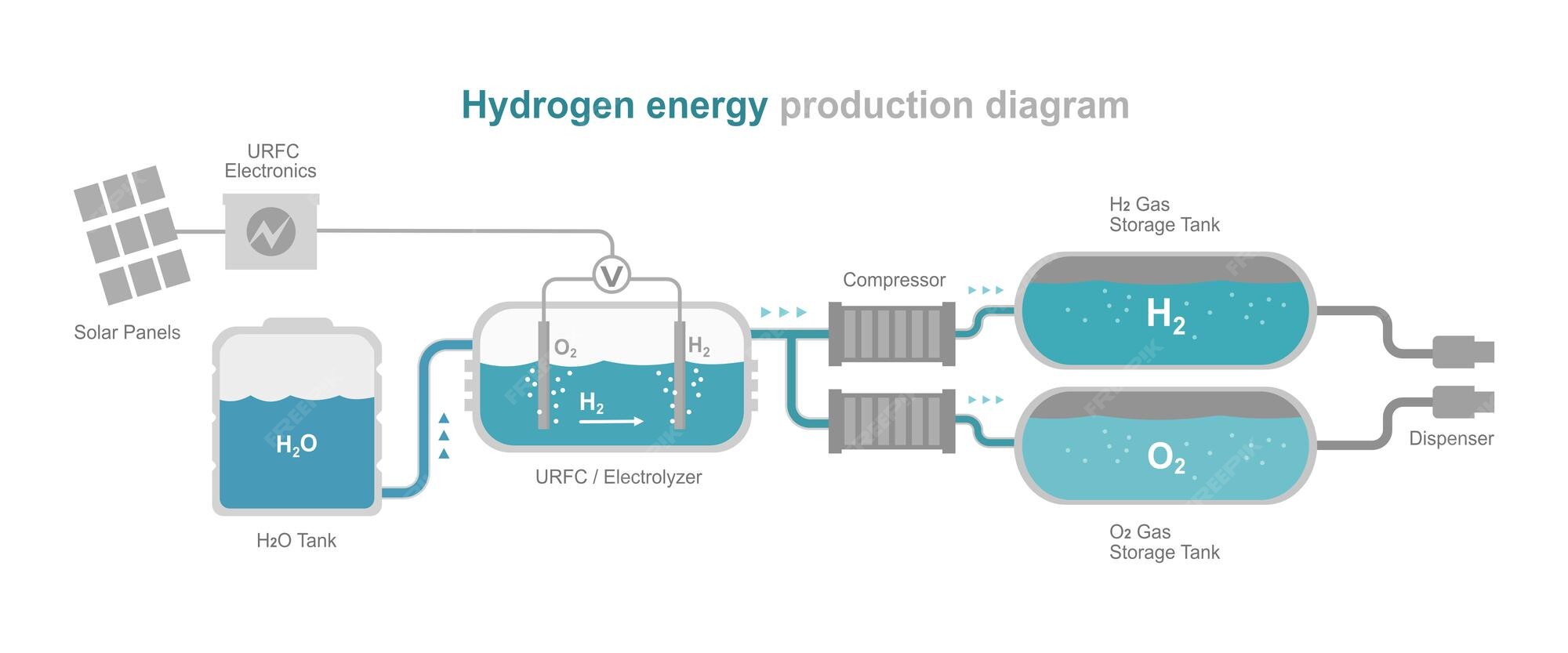
Footnotes
- Net-zero emissions by 2050 – Canada.ca ↩︎
- Greenhouse gas emissions – Canada.ca ↩︎
- Canada’s Zero-Emission vehicle sales targets ↩︎
- A Made-in-Ontario Environment Plan | ontario.ca ↩︎
- A Made-in-Ontario Environment Plan | ontario.ca ↩︎
- Pathways-to-Decarbonization (4).pdf ↩︎
- Environmental Sustainability Action Plan | Bruce County ↩︎
- Canada’s official greenhouse gas inventory – Canada.ca ↩︎
- Wind turbine: what it is, parts and working | Enel Green Power ↩︎
- Geothermal Energy ↩︎
- Earth Energy, Ground-Source/Geothermal Heat Pumps, GeoExchange ↩︎
- Understanding the Definition of Solar Energy ↩︎
- Turning sunlight into electricity: how does solar power work? | nzea ↩︎
- How Does Anaerobic Digestion Work? | US EPA ↩︎
- Air Source Heat Pumps | Save on Energy ↩︎
- What is Natural Gas? | Canadian Gas Association ↩︎
- Propane – Natural Resources Canada ↩︎
- Use of oil – U.S. Energy Information Administration (EIA) ↩︎
- Diesel – Energy Education ↩︎
- Gasoline explained – U.S. Energy Information Administration (EIA) ↩︎
- Coal – Energy Education ↩︎
- What is hydrogen energy? | McKinsey ↩︎


